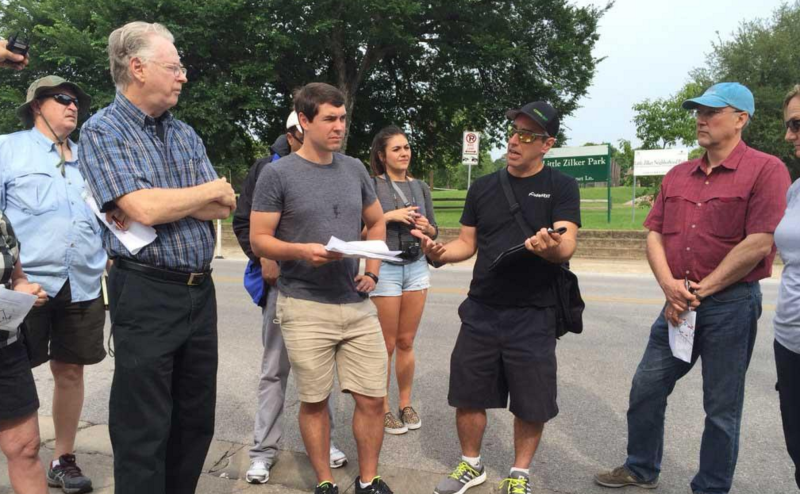From KUT:
City of Austin regulators have released their latest report focused on making housing more affordable. This weekend, staff from the CodeNEXT initiative hosted a community walk to show how those changes could be implemented.
The walk began in front of Zilker Elementary school.
Paul DiGiuseppe of Austin’s Planning and Zoning Department handed out maps to the group, which was about to embark on a neighborhood walk focused on housing affordability.
“The reason we chose the Zilker neighborhood is it’s a good representation of a community that has different types of housing, from single-family, duplexes, small apartments, and in fact, one of the stops on our tour is going to be a cooperative housing,” DiGiuseppe told the group.
One of the first stops on the tour was a duplex. Jonathan Tomko with the city’s Neighborhood Housing and Community Development office explained why this particular kind of development works.
“As you can see from the street, you can’t really see it’s a duplex unless you look and kind of see the house there in the back kind of poking out,” Tomko said. “You’ve got two separate driveways, and there’s a garage there in the back. This is a single-family lot, and basically, there’s two units on it.”
The CodeNEXT team is tasked with figuring out how to increase Austin’s housing supply while maintaining the character of its neighborhoods. It wants to build upon the city’s density bonus programs. The programs allow developers to do things like build more units than normally allowed in exchange for certain public benefits, like adding more affordable apartments. But some residents, like Zilker Neighborhood Association president David King, have concerns about the potential consequences of increased density. “You have a finite amount of land. What [increased density] does is it makes the land prices skyrocket, when you put all the pressure on that. And no matter if you have high-density apartments and condos, they are not even affordable,” King said.
But with more people moving to Austin each year, some say it’s important to find a way to make density work. Mandy De Mayo is a member of the advisory grouphelping to shape CodeNEXT.
“The tradeoff would be, maybe we have more of these, but there would be some required affordability on some of the units, so that we’re not just getting more units, but there’s value in more units. I get the supply argument, but the true value is getting that legally binding affordability,” De Mayo said.
There’s still plenty of time before we see any changes implemented. The city plans to release a draft code in January 2017, and public comment session is scheduled for next week.















